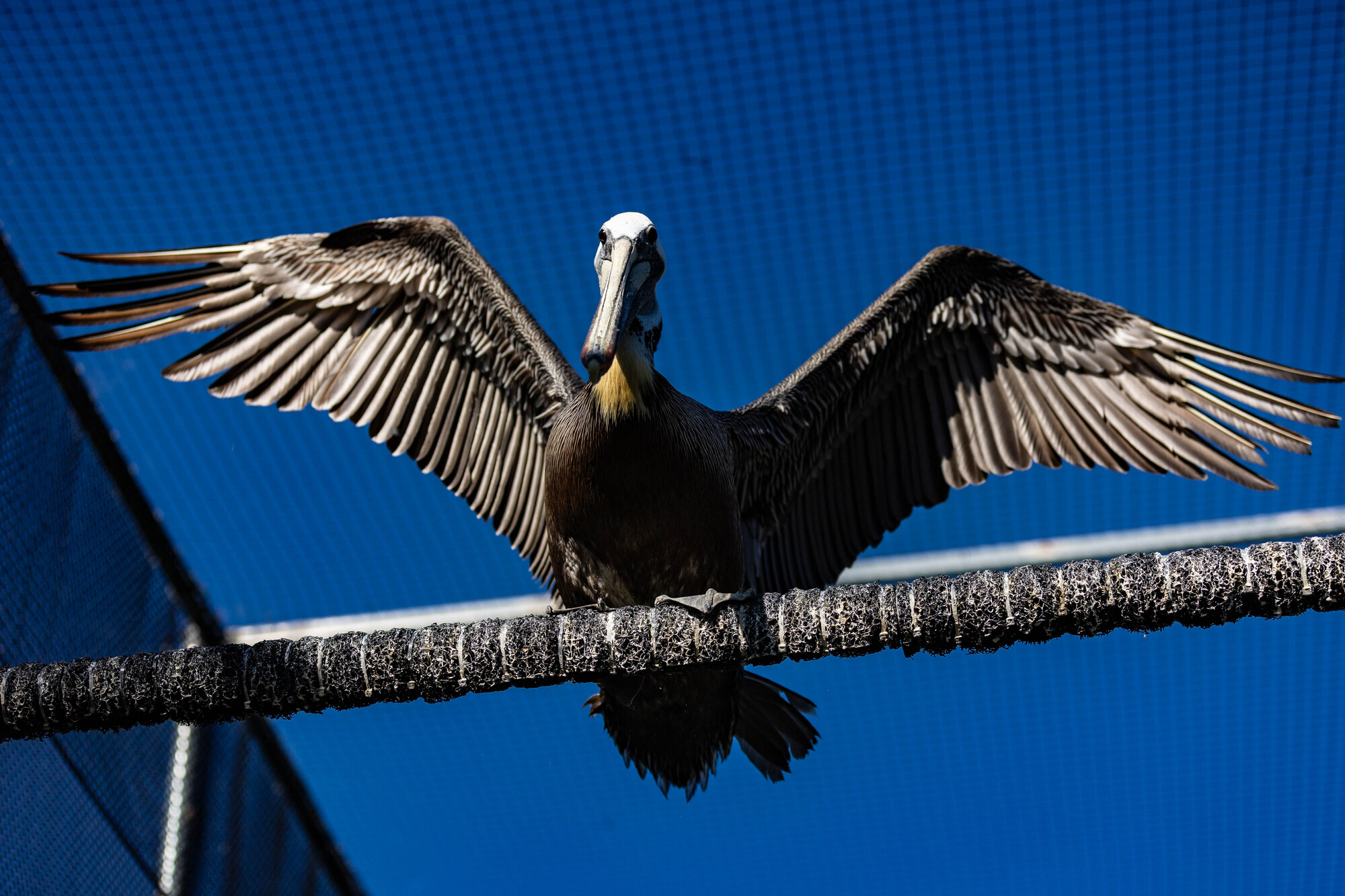Rebecca Duerr, director of research and veterinary science for International Bird Rescue, said that’s a possibility. An additional theory about these starving young, she said, is that their parents, sickened by the harmful algal blooms, might have abandoned them before they were ready to forage alone.
“These young birds didn’t know how to eat yet,” Duerr said. “It’s circumstantial evidence, but it looked like, you know, if mom doesn’t come back, they have to leave the nest or they’ll die.”
This California subspecies of brown pelicans breeds from the Channel Islands south into Mexico. Both the male and female pelicans should feed their chicks until they learn to fly, what’s called fledging, at around 3 months old. V-formations of pelicans then typically migrate north together during the warmer months.
Gibble, who handles the state’s dead seabirds, will wait to hazard more guesses about what went wrong this year until she has additional test results later this month. She wants to see if the algal blooms also affected the starving young pelicans that died, even though they hadn’t shown symptoms while alive.
 Sierra Koop, wildlife rehabilitation technician, fills a tray of herring with water to feed rescued California Brown Pelicans at International Bird Rescue in Fairfield on May 19, 2025. (Gina Castro/KQED)
Sierra Koop, wildlife rehabilitation technician, fills a tray of herring with water to feed rescued California Brown Pelicans at International Bird Rescue in Fairfield on May 19, 2025. (Gina Castro/KQED)
Luckily, the numbers indicate the starvation event is slowing.
For Ciera Duits-Cavanaugh, the manager of the SPCA Monterey County’s Wildlife Rescue and Rehabilitation Center, the influx of young pelicans this year is a mystery. “This may be just an annual thing that happens now,” she said. “Three of the past four years have broken our averages, so something is different.”
Times have been tough for brown pelicans before. The birds almost went extinct in the 1960s, thanks to the now-banned pesticide DDT, and were listed as endangered until 2009.
Warming seas present a newer kind of threat. Back in 2014, some seabird populations plummeted due to fish die-offs during the marine heat wave scientists called “the blob.” Some researchers think pelicans in particular might find fewer fish with warmer sea surface temperatures, such as during El Niño cycles, which are expected to intensify.
 Rescued California Brown Pelicans at an outdoor pen at International Bird Rescue in Fairfield on May 19, 2025. (Gina Castro/KQED)
Rescued California Brown Pelicans at an outdoor pen at International Bird Rescue in Fairfield on May 19, 2025. (Gina Castro/KQED)
“We’re really on the frontline of climate change here,” said JD Bergeron, the CEO of International Bird Rescue. “You can read a research paper and get it intellectually. But the feeling of seeing all these birds struggling when they were previously doing just fine is a scary thing.”
Meanwhile, Bergeron’s staff and volunteers at International Bird Rescue’s two facilities in Fairfield and Los Angeles are working around the clock to bring the rescued pelicans back to life.
The pelicans that the International Bird Rescue releases live on average for six years in the wild. The younger birds have a slightly lower chance of survival.
 A rescued California Brown Pelican lands on a pole of an outdoor pen at International Bird Rescue in Fairfield on May 19, 2025. (Gina Castro/KQED)
A rescued California Brown Pelican lands on a pole of an outdoor pen at International Bird Rescue in Fairfield on May 19, 2025. (Gina Castro/KQED)
The one bird that stranded in Mendocino County on Albion Flat Beach had flown the greatest distance of any other pelican at the Fairfield rescue center. The small bird is likely a female, though still too young — at around 3 months — for the vets to tell.
Since arriving earlier this month, the pelican has graduated from an inside enclosure, where the birds that need routine medicine and other care reside, to an outside space.
On Monday, the other pelicans stretched their wings, swooping between high perches. The fledgling rested by the swimming pool, sometimes watching and other times tucking its face under its wing.



















